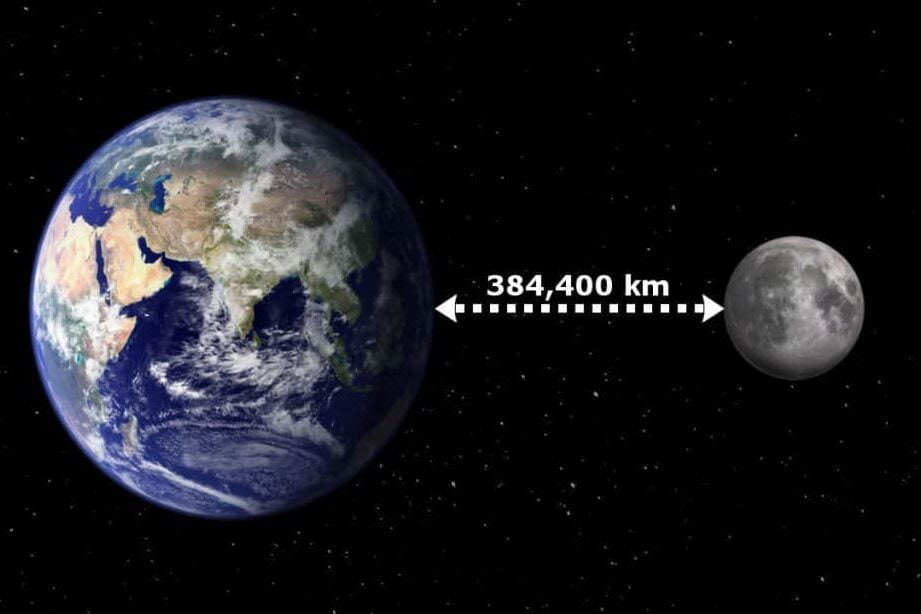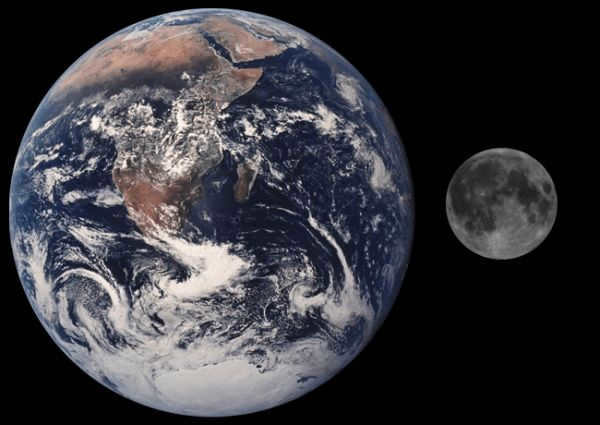
What is the size of the moon – the satellite of the Earth. Information about its mass, density, and gravity, as well as its real and apparent size, the phenomenon of the supermoon, the illusion of the Moon, and a comparison with the Earth in photographs.
The Moon is the most luminous object in the sky (excluding the Sun). To an observer on Earth, it appears enormous, but this is simply because it is closer than other objects. In terms of size, it occupies 27% of the Earth’s size (a ratio of 1:4). When compared to other satellites, ours ranks fifth in size.
The average radius of the moon is 1737.5 kilometers. Its diameter, when multiplied by two, is 3475 km. The equatorial circumference measures 10917 km.
The moon’s total area is 38 million km2 (which is smaller than the total area of any continent).
Mass, density, and gravity
- The lunar mass is 7.35 x 10 22 kg, which is equivalent to 1.2% of Earth’s mass. In other words, the mass of the Earth is 81 times greater than that of the moon.
- The density of the moon is 3.34 g/cm 3, which is 60% of the Earth’s density. However, Saturn’s moon Io has a higher density of 3.53 g/cm 3, making it the densest moon in our solar system.
- The gravitational force on the moon is only 17% of Earth’s gravity. This means that an object weighing 100 kg on Earth would only weigh 7.6 kg on the lunar surface. This reduced gravity allows astronauts to jump much higher on the moon.
The extraordinary moon
Instead of following a perfect circular orbit around the Earth, the moon traces an elliptical path, resulting in occasional proximity. This closest approach is known as perigee. In the fortunate occurrence of perigee coinciding with a full moon, we are graced with the presence of a super moon, which is 14% larger and 30% brighter compared to its usual size. This remarkable phenomenon repeats itself every 414 days.
Illusion of the horizon
There exists an optical phenomenon known as the moon illusion or Ponzo illusion, which causes the Moon to appear larger when it emerges behind objects in the distance along the horizon line. Despite being observed for centuries, a precise explanation for this illusion has yet to be determined. In the accompanying photograph, you can make a comparison between the size of the Moon and the Earth, as well as the Sun and Jupiter.
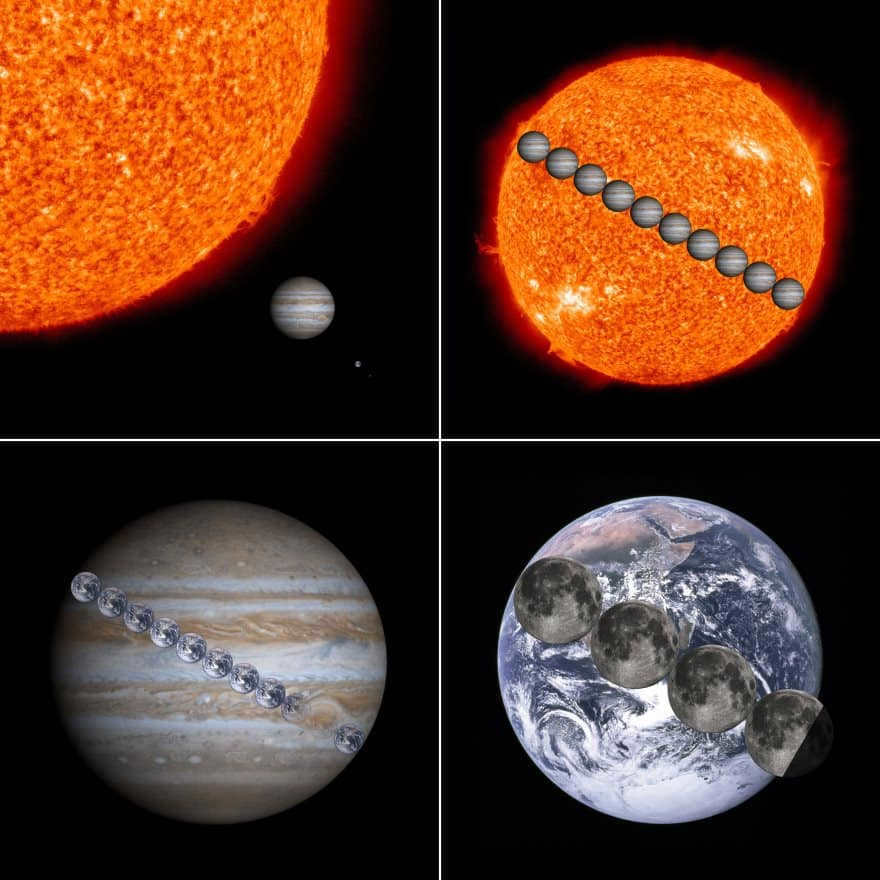
Comparison of the sizes of the Sun, Jupiter, Earth, and Moon
According to one theory, our perception of the size of objects in the sky is influenced by our experience of looking at clouds at different altitudes. We tend to notice that clouds on the horizon appear to be miles away from us compared to the ones directly overhead. When the clouds on the horizon appear to be the same size as the ones overhead, our brain interprets them as being huge despite the distance. Similarly, when we see a satellite in the sky that appears to be the same size as the one directly overhead, our brain automatically assumes that it must be zoomed in.
However, not everyone agrees with this explanation, and there is another hypothesis. This hypothesis suggests that the moon appears larger when it is close to the horizon because we don’t have any terrestrial objects, such as trees, to compare its size to. Without any other objects to provide a sense of scale, the moon appears larger in comparison.
In order to test the Moon illusion, we can place our thumb on the satellite and compare the sizes. If we repeat this process when the Moon returns to its original position, we will find that it is the same size as before. This allows us to determine the actual size of the Moon.
Let’s attempt to envision the magnitude of the Moon…
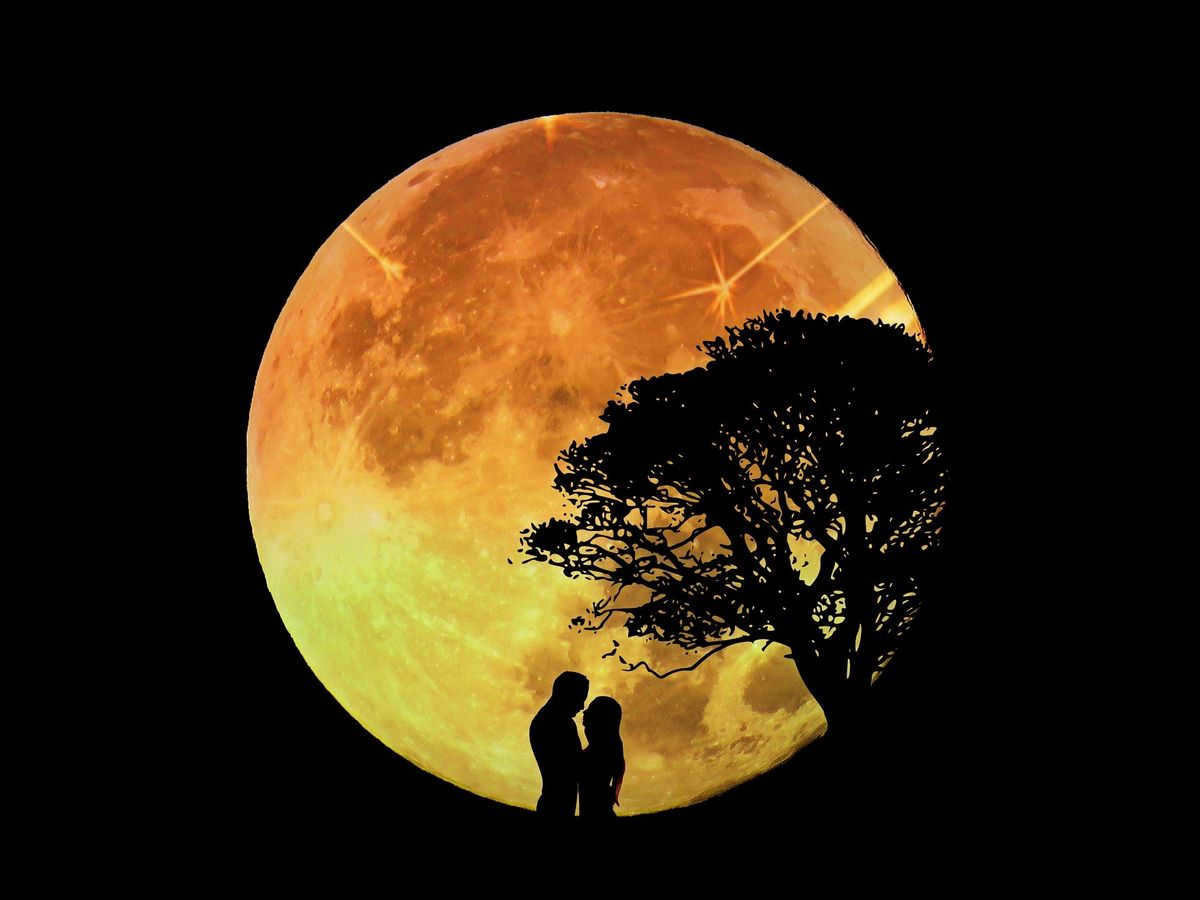
Although the Moon can be observed in the night sky (and occasionally during the day), it is challenging to accurately comprehend its size and distance from Earth.
What is the magnitude of the Moon? Answering this query is not as straightforward as it initially appears. Similar to Earth, the Moon is not perfectly spherical and possesses a slightly flattened form (an oblate spheroid). Consequently, the Moon’s diameter from its poles is smaller than its equatorial diameter.
Nevertheless, the disparity in size between these measurements is minimal, amounting to a mere four kilometers. Specifically, the Moon’s equatorial diameter spans around 3476km, while its polar diameter measures about 3472km. To put this into perspective, one could envision a comparable region of similar dimensions, such as Australia.
The distance between Perth and Brisbane, the two farthest cities in Australia, is approximately 3606 kilometers. This measurement represents the span of Australia. Consequently, if Australia and the Moon were juxtaposed, with the Moon’s diameter stretched, their dimensions would be roughly equivalent.
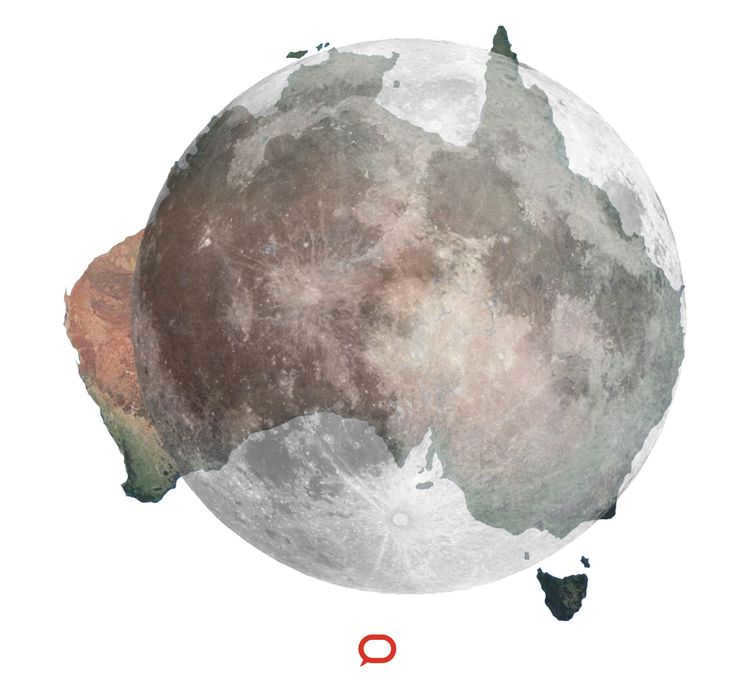
However, this perspective is too narrow. Despite having a similar surface area to Australia, the Moon is actually significantly bigger. Australia spans approximately 7.69 million square kilometers, whereas the Moon spans a whopping 37.94 million square kilometers, making it nearly five times larger than Australia.
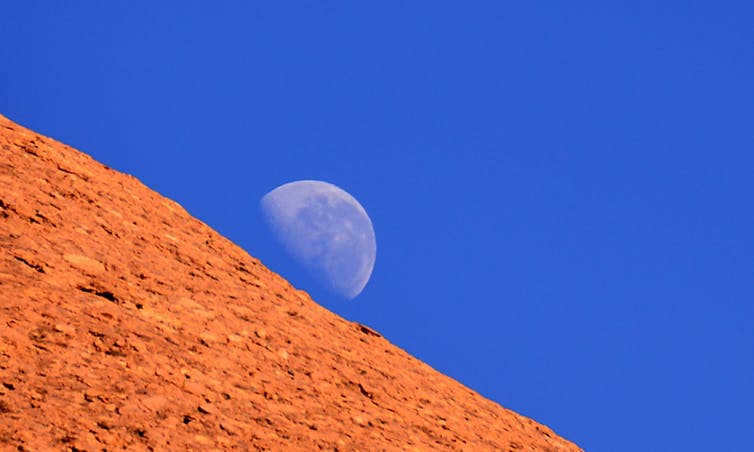
What is the exact distance between the Earth and the Moon?
The Moon’s distance from the Earth is not as straightforward as it may appear. The Moon follows an elliptical path around our planet, causing its distance to vary constantly, with a difference that can reach up to 50,000 kilometers. This variability is the reason why the apparent size of the Moon in our sky constantly changes. Furthermore, the Moon’s orbit is affected by other celestial bodies in the solar system. Additionally, due to tidal influences, the Moon is gradually drifting away from the Earth.
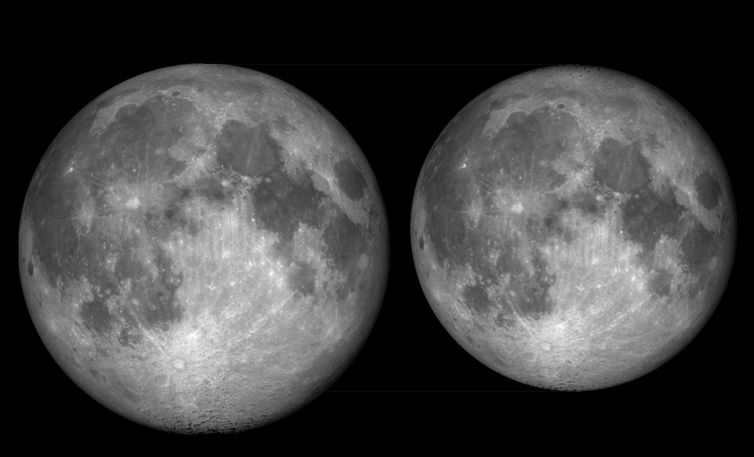
The Apollo mission facilitated a more in-depth exploration of the aforementioned data. In 1969, American astronauts who ventured to the Moon installed a series of energy-independent mirror reflectors on its surface, which remain operational to this day. The reflector system is designed in such a way that it redirects a laser beam from Earth back to its origin.
Through the calculation of the laser’s travel time to the Moon and back, scientists have been able to precisely measure the distance between the Earth and the Moon, as well as monitor the Moon’s changing distance from our planet. Consequently, it has been determined that the Moon is gradually moving away from Earth at a rate of 38 mm per year, equivalent to approximately 4 meters per century.
How to Travel to the Moon
The distance from Earth to the Moon is an average of 384,402 kilometers. Let’s try to put this number into perspective by comparing it to distances on Earth.
If we were to drive from Brisbane to Perth, it would be a distance of 4,310 km, taking approximately 46 hours. To cover the same distance as the Earth-Moon distance, this journey would need to be repeated more than 89 times. It would take over five and a half months of non-stop driving, disregarding traffic and potential accidents.
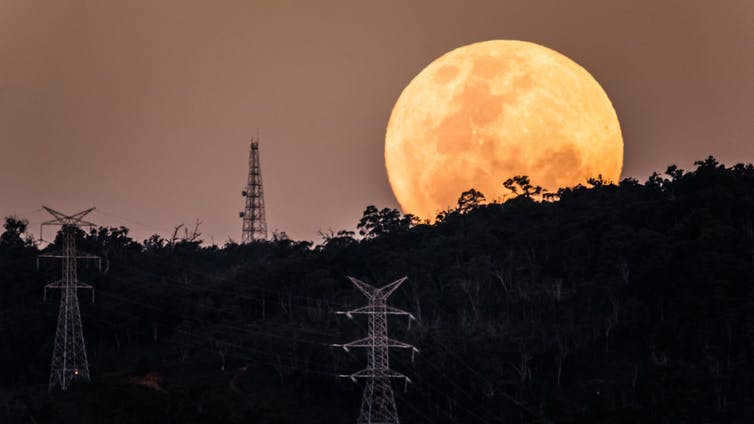
Fortunately, the Apollo 11 astronauts were not limited by Australian speed restrictions, and in 1969, the Columbia command module successfully entered lunar orbit in just three days and four hours.
Solar eclipse
The Sun’s equatorial diameter is approximately 1.4 million kilometers, which is about 400 times larger than the Moon’s diameter. Interestingly, the distance between the Earth and the Sun (which is equal to 149.6 million kilometers) is about 400 times the distance between the Earth and the Moon.
This is the reason why the Moon and the Sun appear to be of the same size from Earth. Consequently, when the Moon and the Sun align (as viewed from Earth), we are able to witness the incredible phenomenon of a total solar eclipse.
Regrettably, scientific experts have reached the conclusion that solar eclipses on our planet will come to an end at some point. As a result of its gradually increasing distance, the Moon will eventually move too far away from Earth to cast its shadow on the Sun. The majority of scientists concur that this phenomenon will take place approximately 600 million years from now.
Moon rovers
Despite the progress made in space exploration, the Moon remains the sole celestial object that has been traversed by humans, and this historic event took place fifty years ago. Today, out of the twelve individuals who had the privilege to set foot on our planet’s natural satellite, only four are still with us.
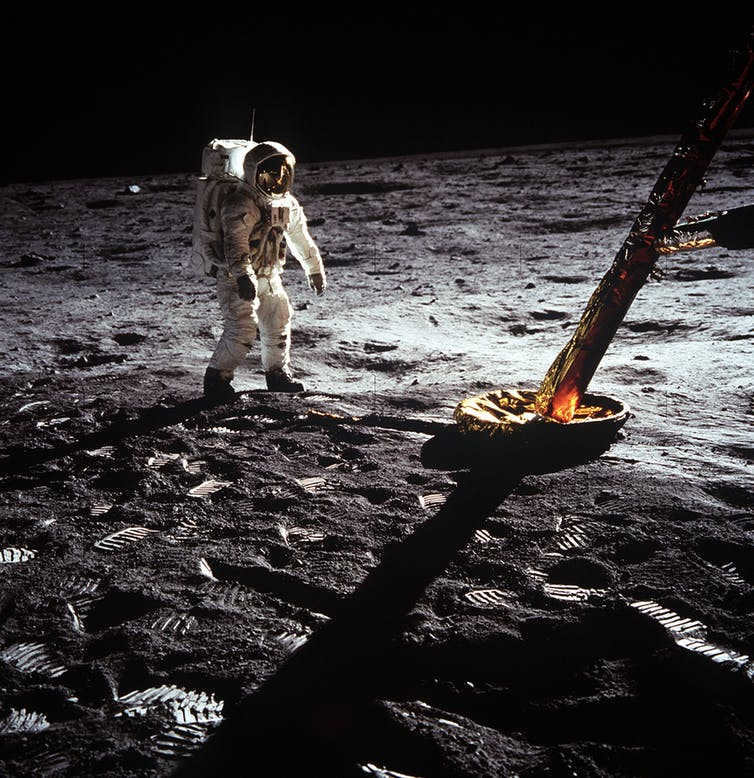
Hopefully, in the years to come, humans will have the opportunity to revisit the Moon and inspire a new generation to continue the exploration of our closest celestial neighbor.
The Moon’s Diameter and Distance from Earth
Amongst the vast scattering of stars, the Moon stands out as the centerpiece of the night sky. Its size and proximity to Earth make it the second brightest object in the sky and capable of completely obscuring the solar disk during an eclipse. It’s no wonder that this nocturnal luminary has captivated humanity for centuries.
If the Moon didn’t exist, many things would be different:
- The days would be significantly shorter.
- The seasons and climate would be more unpredictable.
- The tides would be less pronounced.
- There may be doubts about the possibility of life emerging on our planet as it exists today.
The Diameter of the Moon
When it comes to cosmic standards, the average diameter of the Moon, which is 3474.1 km, is not a particularly large number. To put it into perspective, it’s about half the distance from Moscow to Vladivostok.
However, in terms of natural satellites in the solar system, the Moon ranks as the fifth largest.
But when comparing the size of satellites in relation to their respective planets, the Moon stands alone. With a diameter that is a quarter of the Earth’s diameter, it takes the first place. It is even larger than Pluto.
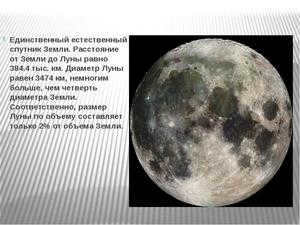

The Earth-Moon Distance: Exploring the Celestial Gap
The Earth-Moon distance is an ever-changing measurement. On average, the gap between the Earth and its lunar neighbor spans approximately 384,400 kilometers. To put this magnitude into perspective, one could fit around 30 Earths within this expanse. Additionally, it takes light a mere 1.28 seconds to traverse this vast distance.
Imagine a scenario where the nearest celestial body could be accessed by a car traveling at a speed of 95 kilometers per hour. If we consider that the total distance is equivalent to approximately 10 Earth circumferences, the journey would take the same duration as circling the planet’s equator 10 times. In other words, it would take just under six months to reach the destination. Thus far, the fastest recorded trip to the Moon was accomplished by the New Horizons interplanetary station, which managed to cross the Moon’s orbit a mere eight and a half hours after its initial launch, while en route to Pluto.
The Moon’s path around the Earth is not a perfect circle, but instead it follows an elliptical orbit. This means that at certain points in its orbit, the Moon is closer or farther away from the Earth. As the Moon revolves around the Earth, it is either approaching or moving away from our planet. The closest point that the Moon gets to the Earth is known as perigee, while the farthest point is called apogee. The distance between the Moon and the Earth varies depending on its position in its orbit. At perigee, the distance is a minimum of 356,400 km, while at apogee, the distance is a maximum of 406,700 km. In terms of scale, this means that the distance between the two celestial bodies can vary between 28 and 32 times the diameter of the Earth.
How to visually determine the size of the Moon and the distance between it and the Earth
The Moon is approximately one-fourth the diameter of the Earth and has a volume 64 times smaller. The distance from the Earth to the Moon is roughly equal to 30 times the diameter of the Earth. To visually estimate this distance and compare the sizes of the two celestial bodies, you can use a basketball and a tennis ball. The diameter ratios are as follows:
- The Earth (12,742 km) and the Moon (3,474.1 km) have a ratio of 3.7:1;
- A standard basketball (24 centimeters) and a tennis ball (6.7 centimeters) have a ratio of 3.6:1.
The values are very similar. Therefore, if the Earth were the size of a basketball, the Moon would be the size of a tennis ball.
Imagine if you asked people to visualize that the Earth is a basketball and the Moon is a tennis ball, and then demonstrate the actual distance between the two objects on that scale. Most individuals would likely estimate a distance of 30 centimeters to a few steps.
However, in reality, to accurately represent the distance, you would need to take a step back of more than seven meters. Therefore, the average distance between a planet and its satellite is 384,400 kilometers, which is equivalent to about 30 Earths or 30 basketballs. Multiplying the diameter of a sports projectile by 30 yields a result of 7.2 meters. This is roughly equivalent to 9 steps for a male or 11 steps for a female.
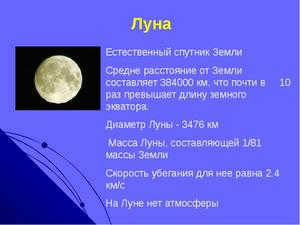
The observable dimension of the Moon from Earth
is 360 degrees in terms of angle. – the complete circumference of the celestial sphere. As a result, the nocturnal luminary occupies approximately half of a degree (on average 31 minutes) – this is its angular (observable) diameter. To put it in perspective, the width of a fingernail at arm’s length is approximately one degree, which is equivalent to two moons.
Through a remarkable coincidence, the apparent sizes of the Sun and the Moon are nearly identical for Earth’s inhabitants. This is made possible by the fact that the nearest star is 400 times larger in diameter than its companion. It is also 400 times farther away. Because of this fortuitous alignment, only on Earth can one witness a total eclipse of the Sun among all the planets orbiting it.
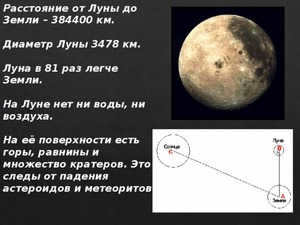
Does the Moon’s size change?
While the true diameter of the Moon remains constant, its apparent size can vary. Specifically, during sunrise and sunset, the Moon appears significantly larger. Despite being closer to the horizon, the distance to the observer does not decrease, but rather slightly increases due to the radius of the Earth. This visual effect may seem counterintuitive, and there is no definitive explanation for this illusion. However, we can confidently attribute this beautiful phenomenon to the intricacies of the human brain rather than the Earth’s atmosphere.
The distance between the Moon and the Earth goes through periodic changes, reaching its maximum at apogee and minimum at perigee. Along with the distance, the apparent size of the Moon also varies, ranging from 29.43 to 33.5 arc minutes. As a result, not only total eclipses can occur, but also annular eclipses, where the Moon’s apparent size at apogee is smaller than the size of the Sun. Approximately every 414 days, the full moon coincides with the perigee passage, allowing for the observation of the largest possible nocturnal celestial body. This phenomenon is commonly known as a super moon, although the apparent diameter at this time is only 14% larger than usual. The difference is quite insignificant, and an ordinary observer would not notice it.
It is important to mention that the Moon, which is the Earth’s satellite, was initially located 10-20 times closer, according to the current theory, formed from the collision of a planet with a massive object 4.5 billion years ago. However, at that time, there was no one to admire the sky adorned with a celestial body that was 10-20 times larger in diameter than it is now.
Video
If you’re curious about the distance between the Earth and the Moon, you can gain some insight by checking out this informative video.
The average distance between the Earth and the Moon is typically measured by calculating the distance between the centers of the two celestial bodies. This method is necessary due to the constant movement of both the Earth and the Moon within the cosmic system. Governed by the force of universal gravitation, the Moon, which is the Earth’s only satellite and the first satellite of the Solar System, continuously approaches and then moves away from the Earth under the influence of varying gravitational forces. The distance from the Earth to the Moon, in kilometers, is a variable value that is determined by the motion periods of these celestial bodies, as well as their phases, cycles, and periods of interaction.
Calculating the Distance to the Moon: Insights from Ancient Greek Astronomers
Efforts to quantify the exact distance between our planet and its lunar companion commenced as soon as humanity recognized the Moon as a distinct celestial body located at a considerable distance from Earth.
Ancient Greek astronomers were among the first to undertake this endeavor. For instance, Aristarchus of Samosia attempted to ascertain the desired distance utilizing geometric principles, employing the method of a right triangle and leveraging knowledge of the Earth’s diameter. However, due to miscalculating the scale, he made a significant error of nearly 20-fold.
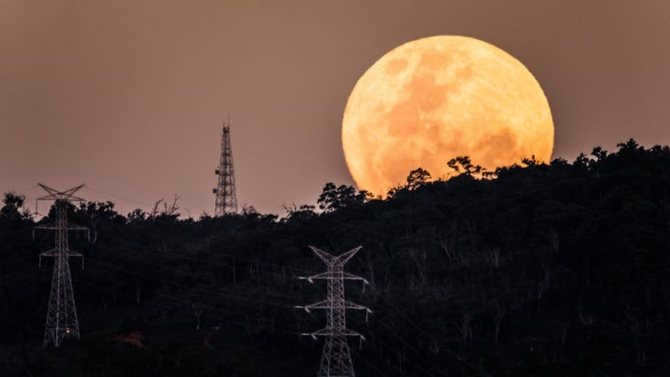
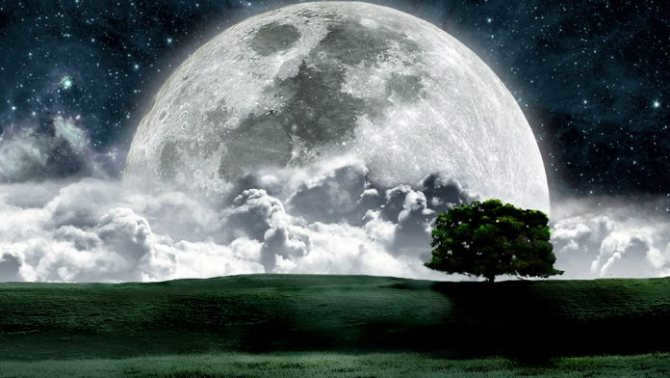
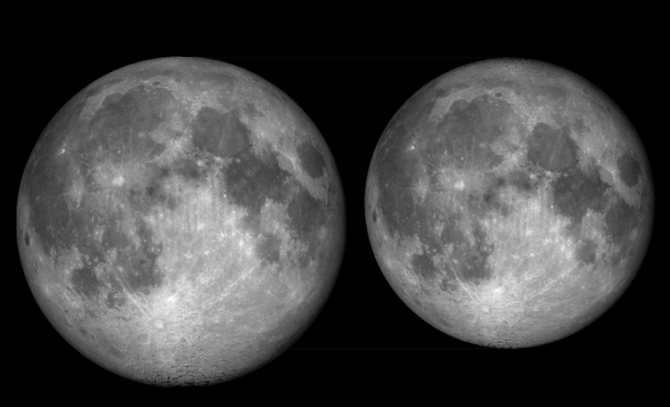
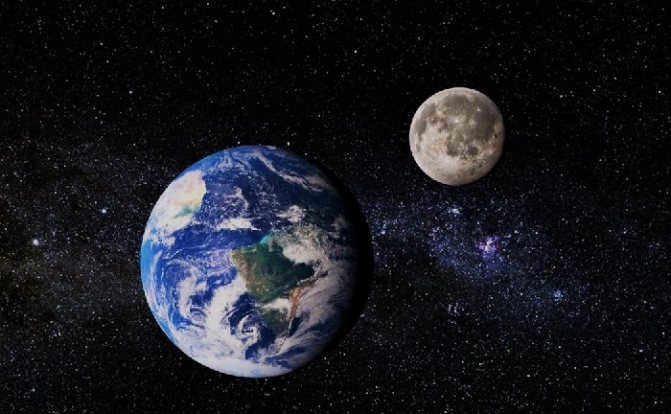
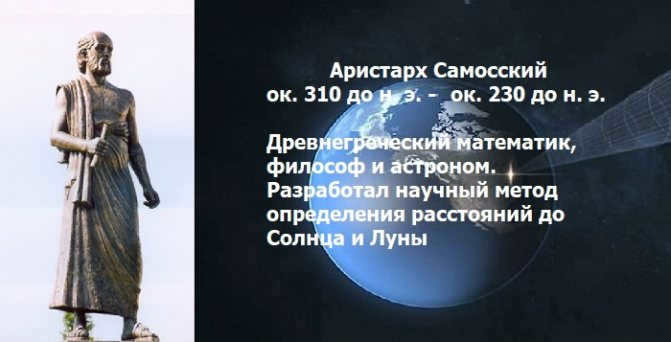
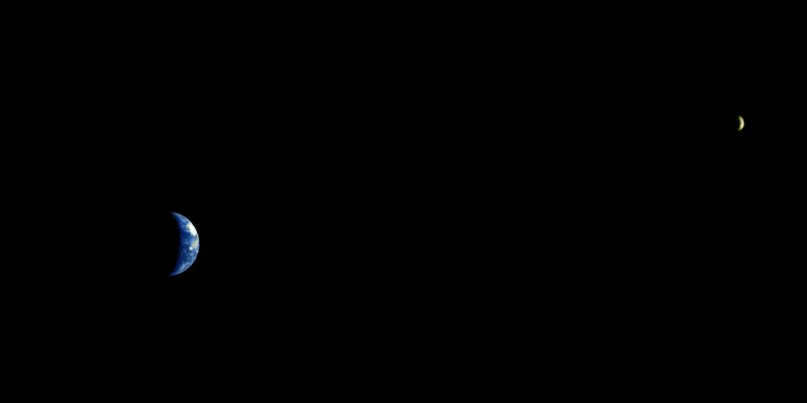
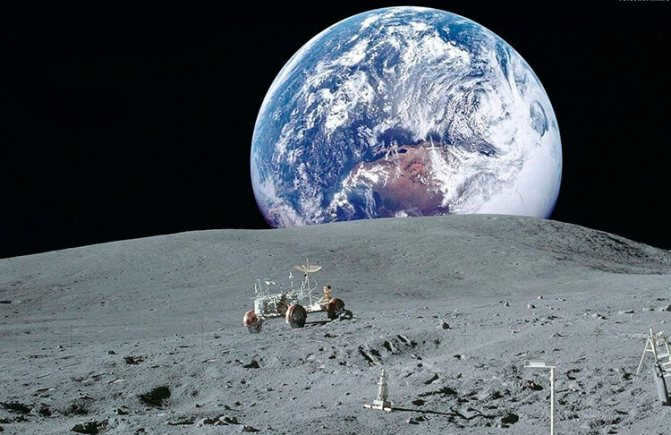

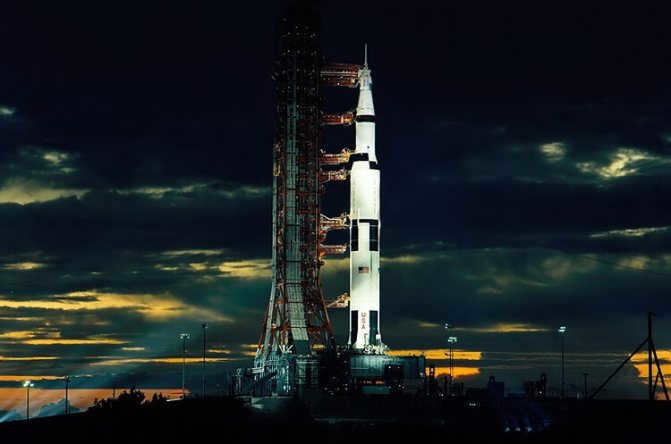

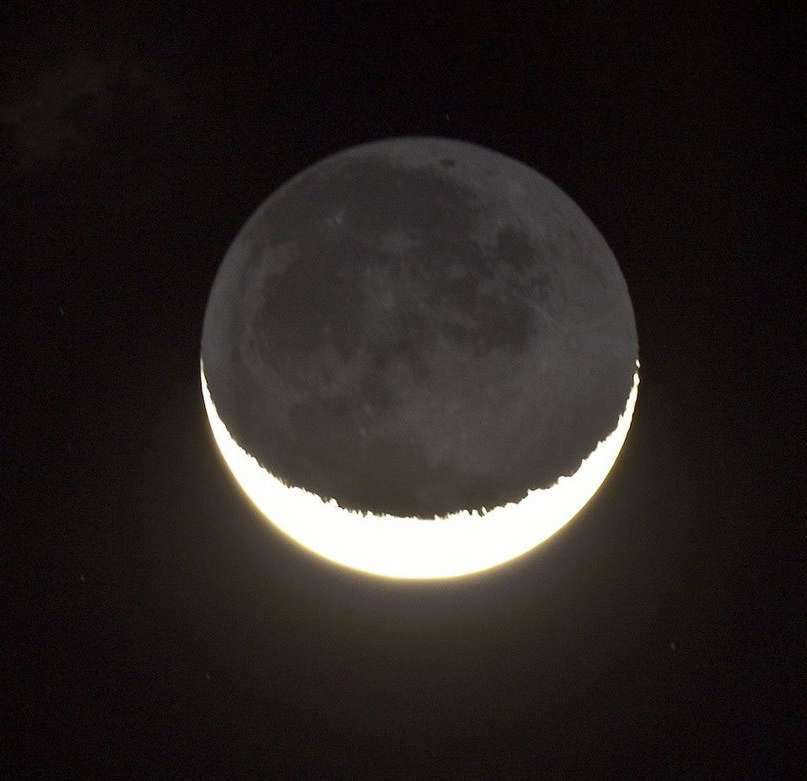
Sideric Month and Synodic Month
The Sideric Month refers to the time it takes for the Earth’s satellite to return to its original position relative to the stars after completing one revolution in its orbit. This period of time is not constant due to the irregularities in lunar motion caused by the varying radius of the elliptical lunar orbit in different locations.
The duration of the Sideric Month can vary by a few hours. On average, it takes about 27.322 Earth days for a celestial body to complete one orbit around the Earth.
The Synodic Month, on the other hand, refers to the period of time between the same phases of the Moon. Like the Sideric Month, it also does not have a constant value. On average, it takes about 29.5 Earth days for the Moon to go through all its phases.
Advancement in methods of measuring distances
The foundation of medieval techniques for measuring distances relies on mathematical and geometric calculations, which include the calculations made by ancient Greek scientists, as well as continuous observations. Subsequently, research started to be based on data gathered from telescopes, and in the 20th century, with the advent of computing machines and spacecraft.
The most recent measurements, which are currently widely utilized, are conducted using a laser beam. A specialized reflector has been installed on the lunar surface by previous research expeditions, to which a beam of light is directed from Earth. A portion of these rays, after reflecting off the Moon, is then detected back on Earth.
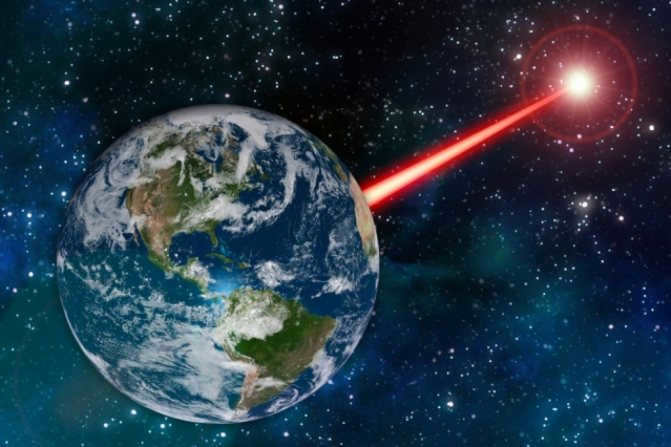
A technique of using a laser beam to determine the distance between the Earth and the Moon was employed. The credit for this method goes to hightech.fm.
By utilizing the known speed of light and the measured time it took for the laser beams to cover a specific distance, all the required computations were carried out.
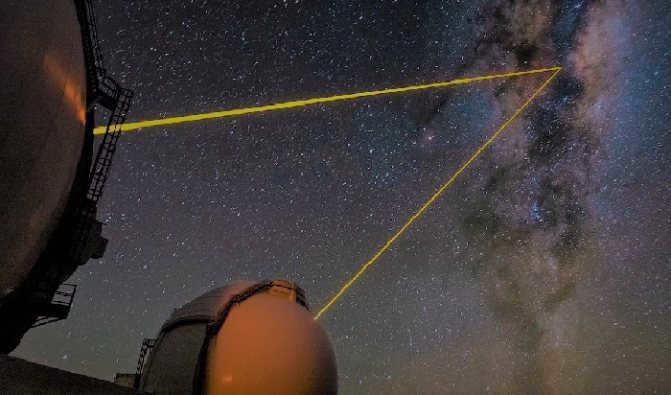
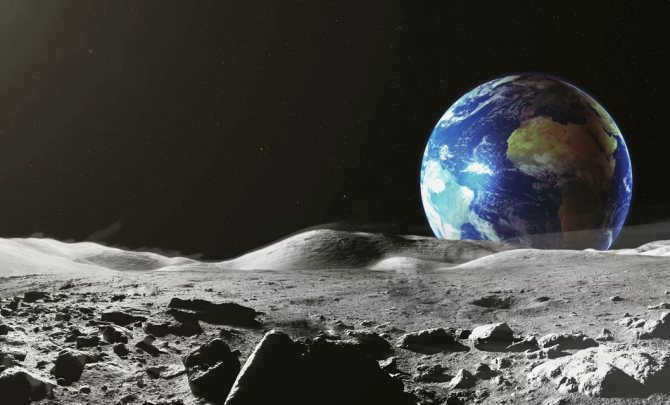
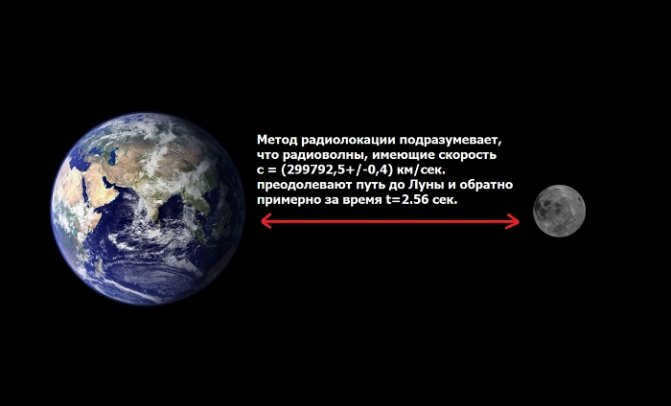
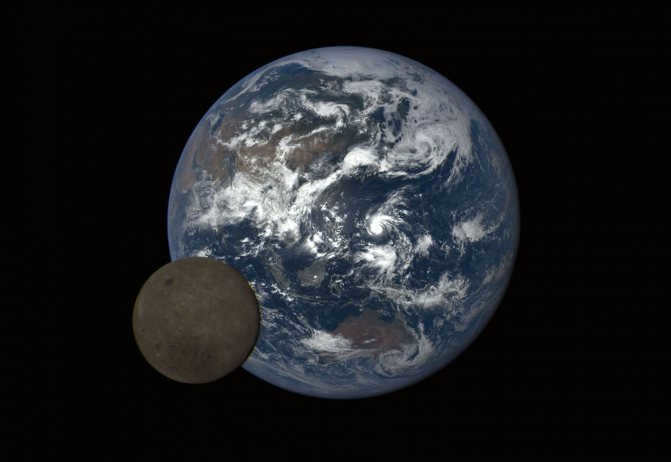
What should I know about the Earth’s natural satellite?
To gain a general understanding of this celestial object, it is important to examine several of its characteristics: the satellite’s volume, diameter, surface area, and mass.
The Moon follows an elliptical orbit and moves at a speed of approximately 1.02 km/sec. If observed from the North Pole of the Earth, the Moon’s motion will be seen as counterclockwise, similar to most other visible celestial bodies. The gravitational force on the Moon is 1.622 m/s².
Scientists and astronomers have long been intrigued by various factors such as the Moon’s distance from the Earth, its impact on climate, and its mass, among other attributes. The study of celestial bodies, by the way, has been ongoing for quite some time.
Determining the distance from Earth and its variations
It is impossible to determine the exact distance in kilometers – the Moon follows an elliptical path and therefore continuously moves away from our planet and then approaches it again.
Additionally, the Moon’s orbit forms a slowly unwinding spiral, causing the satellite to move 38 mm farther away from us each year.
Its movement is also influenced by the Earth’s flattening and the strong gravitational forces of the Sun – the Sun attracts our satellite with 2.2 times the force that we do.
The major semi-axis is defined by astronomers as the average distance between the Earth and the Moon, which is approximately 384.4 thousand kilometers.
Perigee
Perigee refers to the minimum distance between the Earth and the Moon, when the Moon is at its closest point to our planet. This distance can range from 356.4 to 370.4 thousand kilometers, depending on various external factors. Currently, the perigee distance is recorded as 363.1 thousand kilometers.
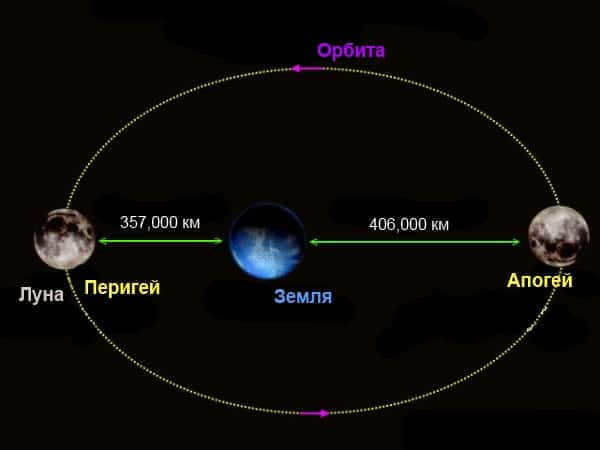
Determining the distance from Earth. Credit: o-kosmose.net.
The celestial event known as a super moon occurs when the Moon’s perigee coincides with its full phase.
Apogee
During apogee, the Moon is situated approximately 405.7 thousand kilometers away from our planet. This value is an average measurement used for convenience in calculations, but it can vary between 404 and 406.7 thousand kilometers depending on the time period.
The term “micro moon” is used to describe the phenomenon when the Moon is both in its full phase and at its farthest distance from Earth, known as the far point of its orbit.
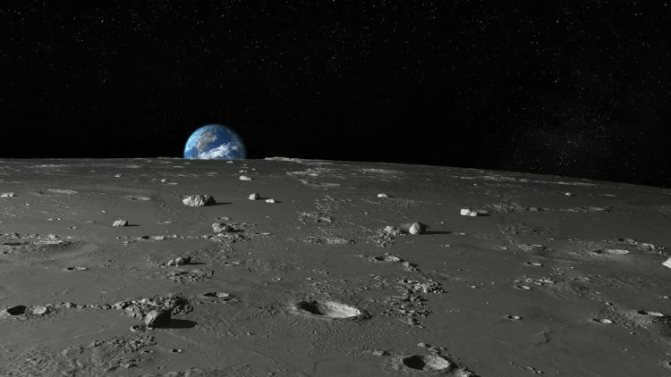
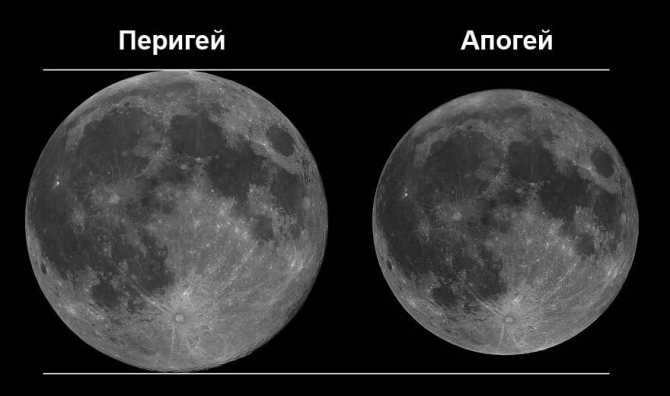
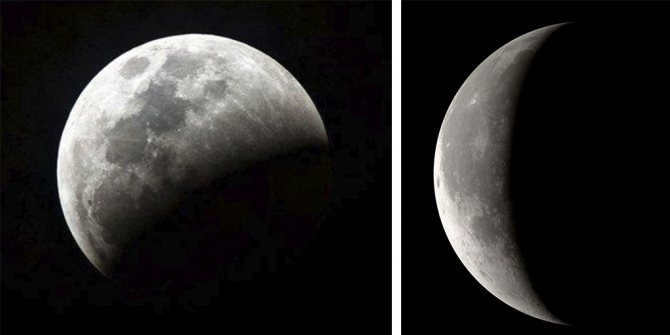
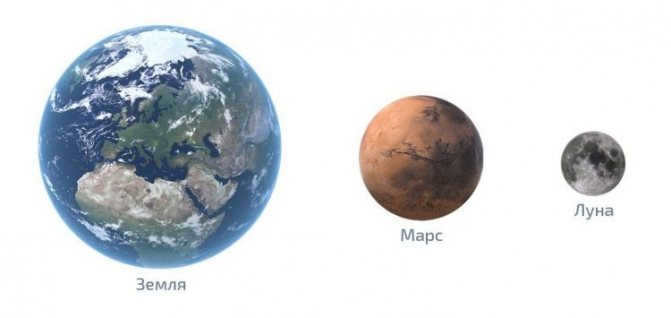
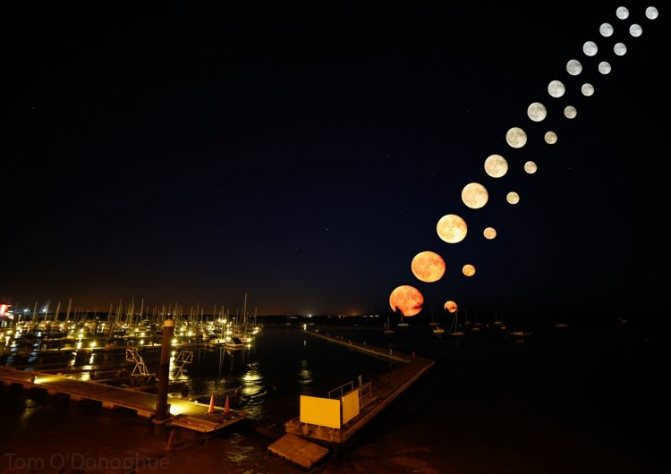
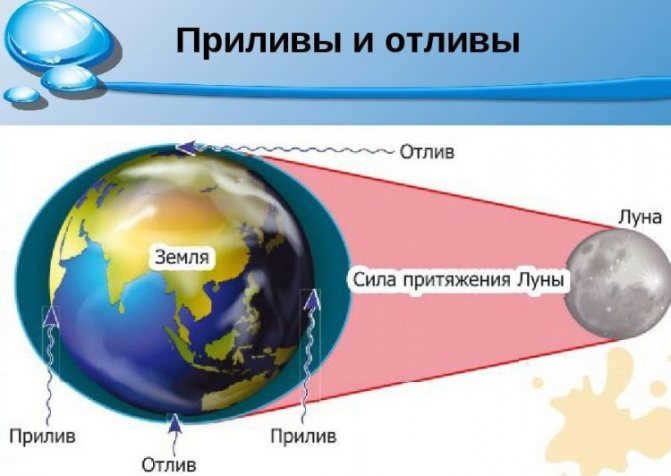
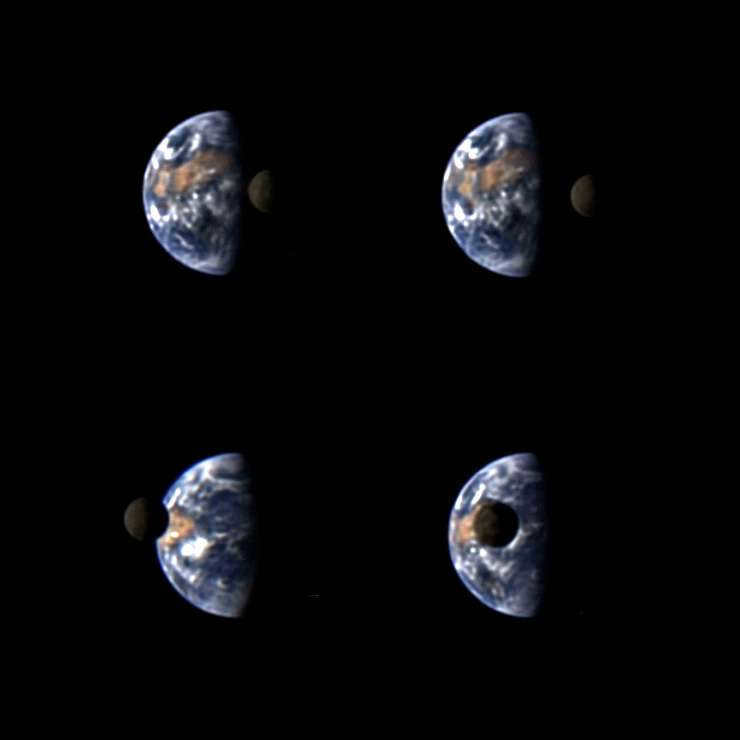
The Sun’s equatorial diameter is approximately 1.4 million kilometers, which is roughly 400 times larger than the Moon’s diameter. Interestingly, the distance between the Earth and the Sun is about 400 times greater than the distance between the Earth and the Moon, which is equal to 149.6 million kilometers.
This is the reason why the Moon and the Sun appear to be the same size when observed from Earth. Consequently, when the Moon and the Sun align (as seen from Earth), a fascinating event occurs – a total eclipse of the Sun.
Regrettably, scientists have determined that solar eclipses on Earth will eventually cease. In the future, the Moon will be too far away from the Earth to eclipse the Sun. The majority of scientists agree that this will happen in approximately 600 million years.
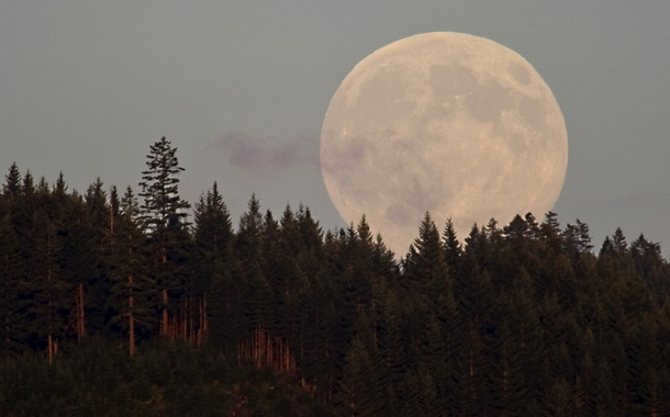
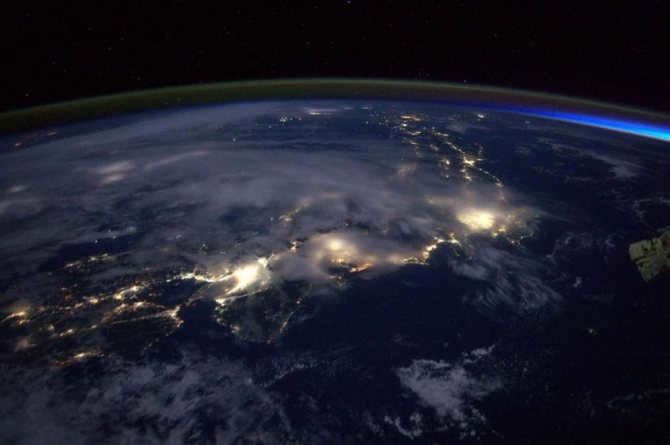
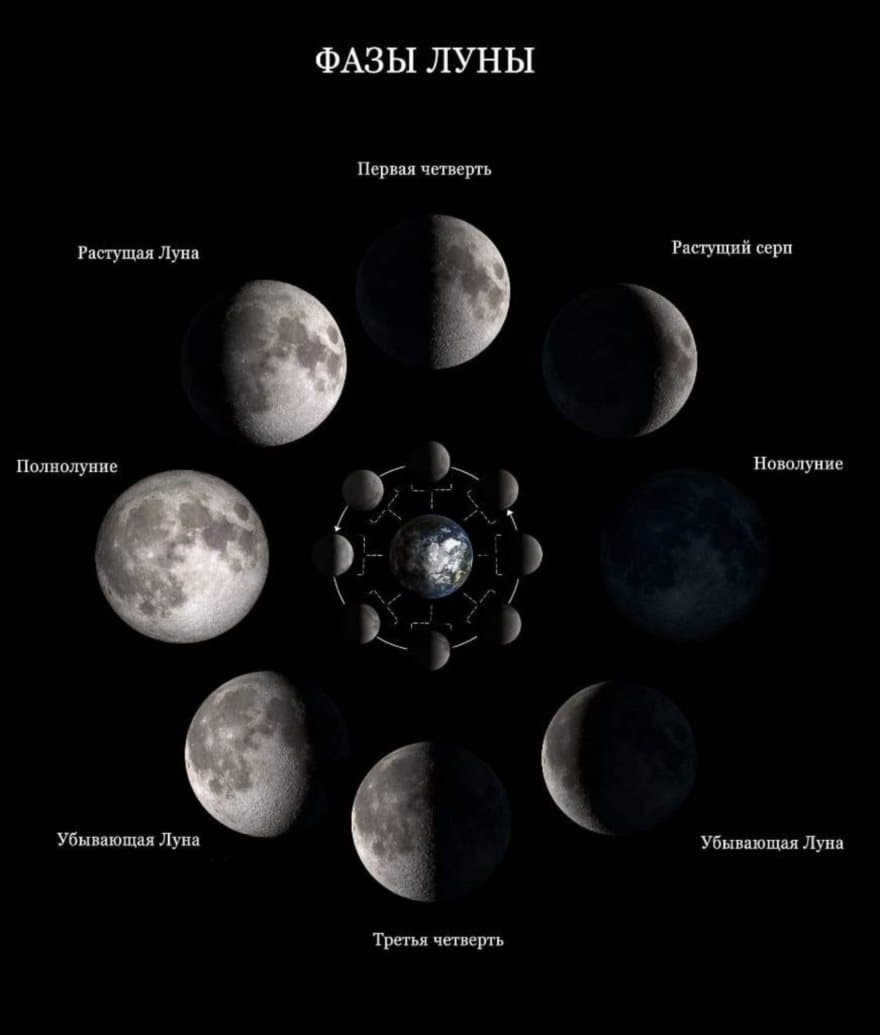
Evolution of the Moon’s Distance Over Time
Astronomers believe that during its early stages, our moon orbited around the Earth at a distance of approximately 15-20 thousand kilometers. As humanity began observing this celestial object, our ancestors perceived the Moon to be 20 times larger than its present size.
There is an unknown explanation for why the ancient scientists’ records of solar eclipse predictions did not match up with the actual dates in our current time. British astronomer E. Halley suggests that this discrepancy could be due to the Earth’s day lengthening over many centuries, which could only happen if the Moon gradually moved away from our surface.
Modern research has confirmed this gradual movement of the Moon – scientists were able to measure its distance from Earth by constantly measuring its height above our planet.
Precise measurements using radar and laser signals have verified that the Moon is moving away from us at a rate of 3.8 centimeters per year.
In theory, there is a chance that the Moon will eventually break free from the Earth’s orbit. However, before that happens, the Moon’s gravitational pull will gradually weaken, leading to the Earth becoming tidally locked with its satellite. This means that one side of the planet will constantly face the Moon. The exact date of this event cannot be determined at this time, but scientists estimate that it will occur no sooner than 616 billion years from now.
Exploration of the Moon with Rovers
Despite the advancements in space exploration, the Moon remains the sole celestial object that humans have set foot on, and this momentous occasion took place fifty years ago. Half a century after the first (and only) moon landing, only four out of the twelve individuals who journeyed to our planet’s satellite are still alive.
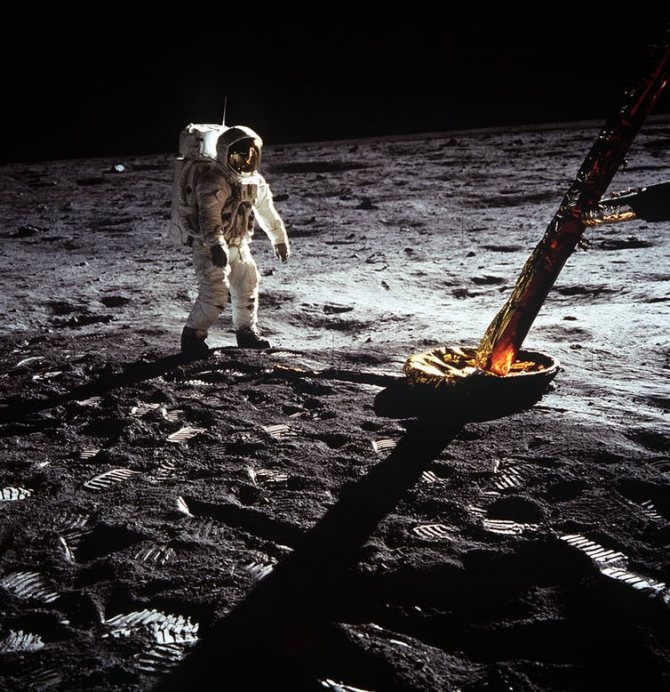
There is hope that in the near future, humans will have the ability to return to the Moon, thus inspiring a new generation to continue the exploration of our closest celestial neighbor.
Time it Takes to Fly to the Moon
Several flights have already been conducted from Earth to the Moon, providing insight into the duration of this space journey:
- The average flight lasts approximately 5 days, which is the amount of time it took China’s Chang’e-1 spacecraft to reach the Moon in 2007 using standard rocket engines;
- The shortest manned flight lasted 3 days and nearly 4 hours, occurring in 1969;
- The first Soviet mission to an Earth satellite was also one of the quickest at that time, with the Luna-1 spacecraft reaching its destination in just 2 days, passing within 500 km of the lunar surface;
- The New Horizons interplanetary probe, launched by NASA, holds the record for the fastest modern flight to the Moon, reaching it in a remarkable 8.5 hours. However, it did not land on the Moon’s surface and instead flew past it.
- The journey from Earth to the Moon theoretically takes about 10 hours when the Moon is at perigee, but in reality, the flight will take longer.
Due to the Earth’s movement in space at high speed, it is not possible to fly to the Moon in a straight line. For every hour of flight, the Moon will move further away from the desired path, requiring constant corrections to the trajectory of the journey.
Furthermore, the spacecraft will not constantly observe the second space velocity of 11 km/s, which is necessary to propel the device beyond Earth’s orbit: right after its engines are ignited, the speed will have to be gradually increased in order to escape the gravitational pull of the planet, and when approaching the satellite of the space station, it will be necessary to decelerate.
By accurately calculating the distances between the Moon and the Earth, space mission planners can correctly determine the amount of fuel required and the duration of the journey.
Satellite Movement
Similar to any other satellite, the Moon orbits around its parent planet. Additionally, as it accompanies the Earth, it also revolves around the Sun. The Moon’s axial rotation, when viewed from Earth, is undetectable. This can create the illusion that the Moon does not rotate on its own axis, but rather that the Earth rotates around the stationary Moon.
However, if the observation point is situated outside of Earth, it becomes apparent that the satellite not only moves in relation to the planet, but also undergoes rotation around its own axis.
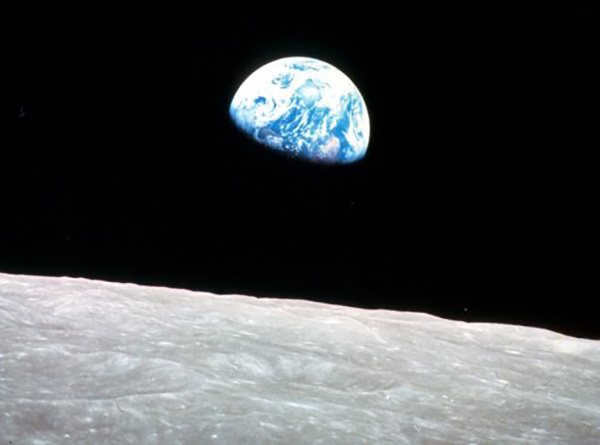
Planet Earth as seen from the Moon’s surface. Credit: NASA SMD.
The same pattern can be observed with the moons of other planets: Charon, which orbits Pluto, also always has the same side facing its planet. The same is true for the moons Deimos and Phobos, which accompany Mars.
In scientific circles, this phenomenon is known as synchronous rotation or tidal capture.
This type of rotation means that when viewed from the main celestial body, the satellite will always show the same half. From the perspective of the satellite itself, the main celestial body will appear to be stationary in the sky. From the opposite side of the satellite, the main celestial body will never be visible.
Scientists link the phenomenon of tidal capture to the Moon’s ability to impact Earth’s climate. Specifically, they describe how the hemisphere of the planet that faces the Moon at a given time experiences a greater amount of atmospheric masses.
This leads to an increase in atmospheric pressure in that hemisphere and subsequent changes in weather conditions. Climatologists hypothesize that these “air tides” also affect the intensity of precipitation.
However, a closer examination of precipitation data from the past 15 years reveals that lunar gravity has a less significant impact on the atmosphere than previously believed.
According to the experts, sea tides also occur due to a similar mechanism, which is caused by the gravitational field of the Moon.
Physical properties of the Moon
- The Moon’s surface temperature ranges from -173 °C at night to +127 °C at sunrise. The temperature of rocks at a depth of 1 meter remains constant at -35 °C.
- The Moon’s average radius is 1737.1 kilometers, approximately 0.273 times the radius of the Earth.
- The Moon’s surface area measures 3.793 x 107 square kilometers.
- The Moon’s average density is 3.3464 grams per cubic centimeter.
- The Moon’s gravitational acceleration is 1.62 meters per second squared (0.165 g).
- The Moon’s mass is 7.3477 x 10^22 kilograms.
Closest celestial object
The Moon is a natural satellite of Earth. It appears as a bright sphere in the sky, even though it does not produce its own light, but rather reflects it. The Sun is the source of light, which illuminates the lunar surface.
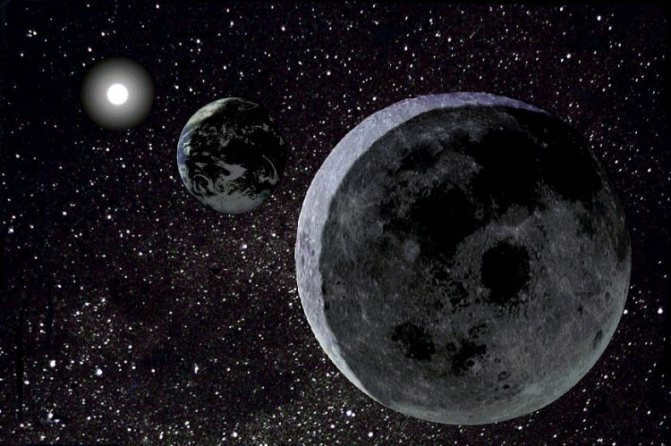
Every time you gaze up at the sky, you can witness the ever-changing Moon and its various phases. These cycles are a direct result of the Moon’s continuous rotation around our planet, which in turn orbits around the Sun.
The Key Characteristics of the Moon
The Moon has a diameter of 3,474 kilometers, while the Earth has a diameter of 12,742 km. In other words, the Moon’s circumference is only about 3/11ths of the Earth’s diameter.
The surface area of our planet’s satellite is approximately 37.9 million square kilometers, significantly smaller than the Earth’s surface area of 510 million square kilometers. Even when comparing only the lunar surface to the Earth’s continents, the Moon’s area is four times smaller. Additionally, the Earth’s volume is 50 times greater than that of the Moon.
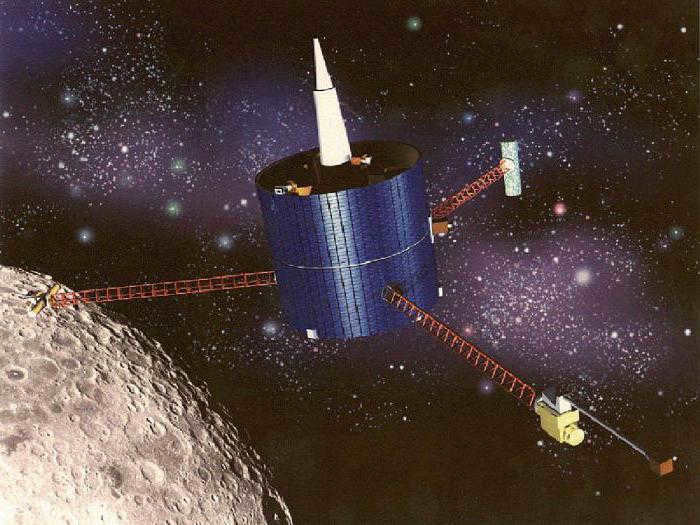
Modifications in the Apparent Shape of the Moon
When the Moon is illuminated from the side, it takes on a crescent shape due to its spherical nature. The illuminated side of the Moon always faces the Sun, even if the Sun is below the horizon.
The duration of the complete cycle of Moon phases, known as the synodic month, is not constant because of the elliptical shape of the Moon’s orbit. On average, the synodic month lasts 29 days, 12 hours, 44 minutes, and 2.82 seconds.
During the phases of the Moon that are near the new moon (at the start of the first quarter and at the conclusion of the last quarter), when the moon appears as a thin crescent, the part of the moon’s surface that is not lit up by direct sunlight creates what is known as the ashen light of the Moon – a visible glow with a distinctive ash-colored hue.
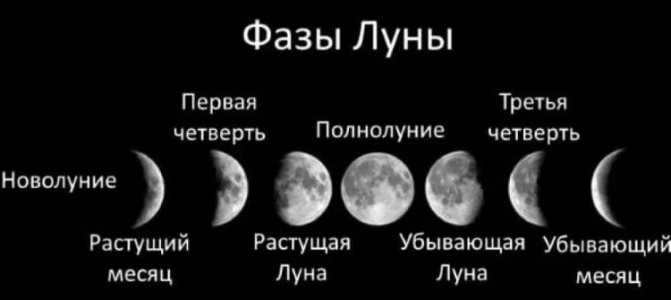
The Moon goes through various stages of illumination:
- new moon – the phase when the Moon is not visible.
- crescent moon – the first appearance of the Moon in the sky after the new moon, in the shape of a thin crescent.
- first quarter – the phase when half of the Moon is illuminated.
- waxing moon – the phase when the illuminated part of the Moon is increasing.
- full moon – the phase when the entire Moon is illuminated.
- waning moon – the phase when the illuminated part of the Moon is decreasing.
- last quarter – the phase when half of the Moon is illuminated again.
- old moon – the phase when the Moon is not visible again.
Mnemonic rule to determine moon phases
In order to differentiate between the first quarter and the last quarter, an observer in the northern hemisphere can utilize the following mnemonic rule. If the crescent shape of the moon in the sky resembles the letter “C”, then it is a waning moon, indicating the last quarter. Conversely, if it is inverted and resembles the letter “P” when mentally adding a stick to it, then it is a waxing moon, signifying the first quarter.
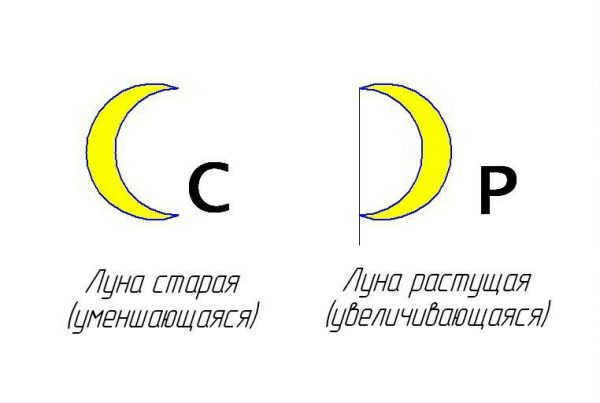
Typically, the month in its growing phase is observed during the evening, while the month in its aging phase is observed in the morning.
It should be noted that near the equator, the month always appears “lying on its side,” making this method unsuitable for determining the phase.
In the southern hemisphere, the orientation of the crescent moon in the corresponding phases is opposite: a waxing moon (from new moon to full moon) resembles the letter “C,” while a waning moon (from full moon to new moon) resembles the letter “D” without the stick.
If the front edge of the moon is illuminated in the direction of the moon’s movement, it is considered waxing. On the other hand, if it appears shaded, the moon is considered waning.
You have explored the entire globe. You have visited every single country. Your fascination with the planet Earth knows no bounds. However, now you have set your sights on a new destination – the moon. How long will it take you to reach this celestial body? Allow me to enlighten you.
Exploring the Moon
The moon is a remarkable natural satellite that orbits around the Earth. On average, it is located approximately 384,467 kilometers away from our planet, which is roughly equivalent to one light second. It is worth mentioning that this distance is not fixed and can vary over time. This fluctuation occurs because the moon’s orbit is not a perfect circle.
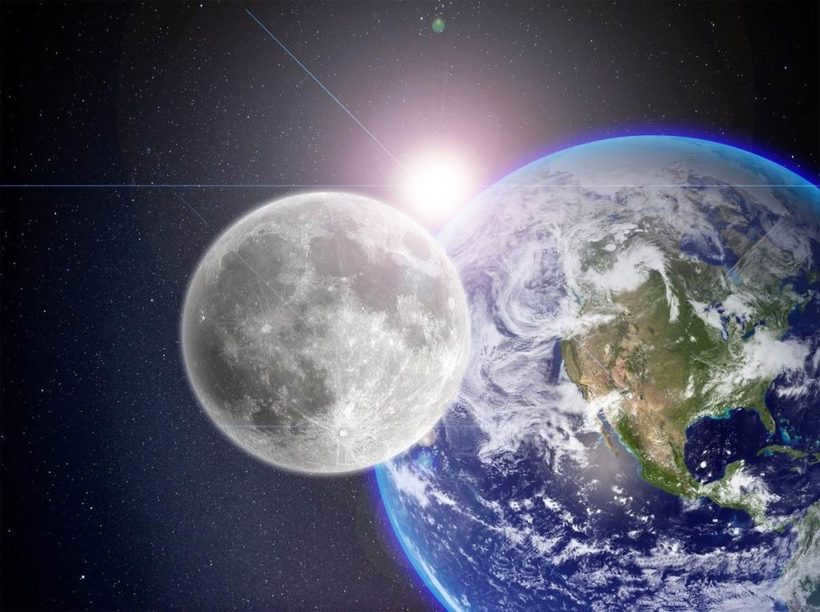
How much time is required to travel to the moon?
I am curious about the duration it would take to reach the moon using different modes of transportation.

- “The Boeing 777 has a top speed of 905 km/h. It would require 425 hours or approximately 17 and a half days to travel the same distance as the Earth to the Moon.
- The bullet from an AK 74 reaches a velocity of 900 m/s or 3240 km/h. It would take approximately 119 hours or about 5 days to cover the distance to the Moon.
- The Saturn 5 rocket and Apollo 11 spacecraft had a speed of 10.84 km/s or 39,000 km/h on their journey to the Moon. If the flight had taken a direct path, it would have taken approximately 9 hours to reach the Moon.
Characteristics of Moon flights
One interesting aspect of jet flights is that they rarely follow a straight path. In order to conserve fuel, the engines are only turned on for short periods of time at the beginning of the journey to accelerate and at the end to brake. For the majority of the trip, the aircraft relies on inertia and the gravitational forces of the Earth, Moon, and Sun. These factors greatly influence the flight trajectory, making it a challenging task for ballisticians to calculate. When the Apollo missions were launched, they didn’t immediately reach their maximum speed. Instead, they were first placed in Earth’s orbit before being launched towards the Moon. This required additional time, resulting in a four-day journey from Earth to the Moon for the Apollo missions. So, if you plan on traveling to the Moon, be prepared for a similar duration.
Indeed, the concepts of space exploration, distant planets, and extraterrestrial star clusters are all incredibly fascinating subjects! Take, for instance, the question of how long it takes to travel to the Moon. And what can one expect to find upon arrival?
Throughout history, this celestial entity has captivated the interest of individuals since ancient times. The earliest relatively precise estimation of the distance in kilometers to the moon was accomplished by the ancient Greeks.
The ancient Greek astronomer Hipparchus was the one who made the original calculation of the distance to the Moon, determining it to be about 380 thousand kilometers. His calculation was remarkably accurate. Today, modern calculations estimate the distance to be approximately 384.4 thousand kilometers. The Moon has always captured the imagination of humanity, but it was during the scientific and technological revolution that a new wave of interest in our satellite emerged. This era sparked hopes for a high-tech future, including the possibility of space travel and exploration of the Moon. This concept was frequently explored in science fiction novels from the late 19th to the early 20th century, when the Moon became seen as a commonplace and uninteresting subject. One such novel by Herbert Wells depicted the journey to the Moon using a device that negated the force of gravity, allowing the characters to reach their destination in just a few days. However, now it is time to move from theory to practice.

Indeed, there is still a need for clarification: how exactly do we go about flying? Or rather, what do we fly on? Because if we are discussing the duration of a journey to the Moon at the speed of light, the answer would be quite astounding! Despite the significant distance from our earthly perspective (although, in all fairness, it is minuscule in the grand cosmic scheme), light can traverse this vast expanse in a mere 1.3 seconds. This is due to its unparalleled velocity, which happens to be the highest known to science. It is estimated to be around 300,000 kilometers per second. However, an entirely separate question arises: “How long would it take for a human to travel to the Moon?”
Up until now, only two individuals who were part of the NASA space program have had the opportunity to venture to the Moon – Neil Armstrong and Buzz Aldrin. They made history in 1969 by walking on the lunar surface. Their Apollo spacecraft traveled for over three days to reach their destination. While the spacecraft’s velocity would have allowed them to cover this distance much faster by taking the shortest route in a straight line, this was not the chosen path. The actual flight to the Moon is a bit more complex due to various factors that need to be considered when determining the flight trajectory and duration. These factors are related to the Earth’s rotation.
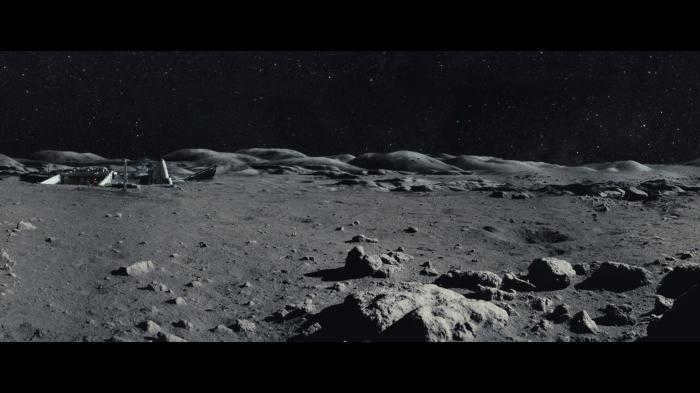
Despite the fact that humans no longer flew to the moon and landed there, there have been numerous spacecraft launched by them. One of the most interesting ones is the slowest and the fastest. The longest journey to the moon was made by the American ESA probe SMART-1, which took over a year. However, the advantage of this mission was that the spacecraft used an extremely inexpensive engine, consuming a minimal amount of fuel throughout the entire flight. This was a cost-effective way to reach our closest celestial neighbor. On the other hand, the fastest journey was achieved by NASA’s New Horizons spacecraft, which covered the same distance in just eight and a half hours.
Inquisitiveness is a fundamental characteristic of every individual. It is this quality that has led to numerous scientific breakthroughs and advancements in technology. Throughout history, people have been captivated by the night sky, with its countless stars and the tranquil presence of the moon. It comes as no surprise that the desire to explore celestial bodies has been a constant aspiration for humanity.
The discovery of the telescope validated the belief that the Moon was situated at the closest possible distance to the Earth. This revelation sparked the imaginations of science fiction authors who depicted audacious adventurers journeying to this celestial body in their novels. Intriguingly, the proposed means of transportation were well-aligned with the prevailing zeitgeist of their era: a capsule, a rocket propelled by a jet engine, an anti-gravity material known as keyvorite (H. Wells), and so forth. Nevertheless, an accurate estimation of the duration required to travel to the Moon remained elusive.
Based on the distance mentioned above, we can accurately determine the number of miles to fly to the Moon. It’s important to consider the speed of travel in order to plan this desired trip. Therefore, the length of the journey to the surface of the natural satellite depends on the chosen mode of transportation and is as follows:
Driving a car at a speed of approximately 100 km/hr will take around 160 days;
Similarly, an airplane traveling at a minimum speed of 800 km/hr will take “only” 20 days;
The American Apollo program’s ships reached the Moon’s surface in three days and four hours;
By traveling at a speed of 11.2 km/s, it would be possible to cover the distance in 9.6 hours;
By transforming into pure energy (a concept reminiscent of Arthur C. Clarke’s “Space Odyssey”) and zooming at a mind-boggling speed of 300,000 km/s, one could potentially reach the Moon in a mere 1.25 seconds;
However, for those who follow the adage “the quieter you go, the farther you’ll get,” embarking on a continuous stroll at a leisurely pace of 5 km/h would take a minimum of nine years.
Evidently, the question of “how long does it take to fly to the Moon?” can now be considered definitively answered. All that’s left is to decide on a mode of transportation, prepare the necessary patience and supplies, and embark on the journey.
Man has always been fascinated by space. It is vast, uncharted, and full of mystery, sparking excitement about the potential for space travel and the discovery of new worlds. The Moon, Earth’s nearest celestial neighbor, has naturally been a target for exploration since the early days of space exploration. In this article, we will discuss the duration of a journey to the Moon and delve into the history of its exploration.
The Space Race: A Tale of Exploration
The Soviet Union achieved a monumental feat by launching the first human into space, ultimately triumphing over the United States in an unspoken rivalry. In retaliation, the United States embarked on their own lunar program, initially focusing on orbiting the satellite before ultimately setting their sights on landing astronauts on the moon.
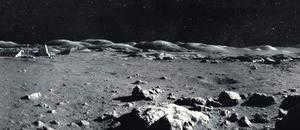
Calculating the exact amount of money spent on this program is not feasible. According to experts, the cost of implementing this program, adjusted for inflation, is estimated to be around $500 billion. To facilitate these space missions, NASA designed the Saturn 5 rocket, which enabled astronauts to reach the Moon in just 3-4 days. This launch vehicle was the most formidable rocket of its time, capable of covering the vast distance of several hundred thousand kilometers from Earth to our satellite in the shortest possible time.
Neil Armstrong, an American astronaut, became the first person to step onto the Moon’s surface in 1969 as part of the Apollo 11 mission. He successfully landed a lunar module near the Sea of Tranquility. After his historic achievement, several manned missions were sent by the United States, and approximately twelve astronauts had the opportunity to explore the lunar surface. They conducted various studies and collected over 20 kilograms of lunar soil, which they brought back to Earth.
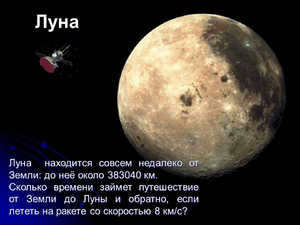
After several years, the interest in the Moon waned, leading to the decision to scale back the costly flight program. The rationale behind this move was the exorbitant expenses associated with manned missions. Consequently, both the United States and the Soviet Union shifted their focus towards exploring the near-Earth space and constructing manned stations in Earth’s orbit. Flying into Earth’s orbit proved to be much simpler and more cost-effective, enabling significant advancements in space exploration.
Chronicles of Conquest:
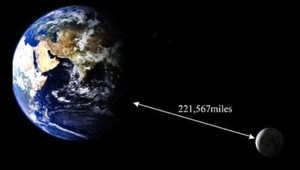
How much time does it take to travel to the moon?
The moon orbits the Earth in a slightly flattened elliptical path, so the distance between the Earth and the Moon can range from 355 to 404 thousand kilometers. It’s hard for many people to comprehend such a vast distance. To cover this distance, the following timeframes would be needed:
- If you were to walk, it would take nine years of non-stop walking.
- By car, traveling at a speed of approximately 100 kilometers per hour, it would take 160 days to reach the Moon.
- By plane, it would take about 20 days to fly to the Moon at a speed of 800 kilometers per hour.
- The Apollo spacecraft‘s speed of several thousand kilometers per hour allowed it to reach the Moon in just 72 hours.
- Nowadays, it takes only nine hours to travel to the Moon on a modern spacecraft.
Theoretically, the distance of 380-400 thousand kilometers to the Moon is not a major obstacle for modern rockets. The launch time is not critical, as the difference in distance to the satellite is not significant. These flights typically last only a few days, which helps to mitigate the radiation exposure in space, particularly during solar flares.
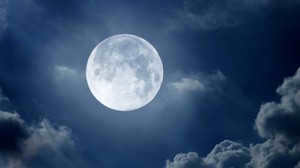
The development of modern heavy launch vehicles, specifically designed for Mars missions, opens up the possibility for lunar exploration as well. These vehicles could be used to travel to and from the Moon, with a one-way journey taking approximately 15-17 hours to cover a distance of 400,000 kilometers. The key requirement for such missions would be the establishment of a lunar base, where landing modules could touch down and enable scientific research or even sustained habitation for a designated period of time.
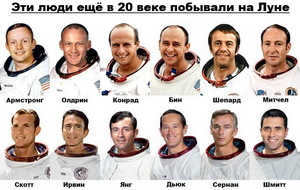
The ongoing discussion about the practicality of exploring and sending missions to the moon continues to this day. While there was initially a great deal of interest in such voyages during the early days of human space exploration, even with the considerable distance of several hundred thousand kilometers, people eventually came to realize that establishing a base on the moon, which lacked valuable minerals, would render these costly journeys essentially pointless.
However, in the present day, as humanity contemplates the first journeys to Mars and the colonization of the Red Planet, the moon could potentially serve as a staging base for a period of time, thereby simplifying long-distance interplanetary travel. In essence, our satellite could become a testing ground, enabling the eventual settlement of Mars and other habitable planets.
Thanks to advancements in technology, it has become significantly easier to travel to our natural satellite, the Moon. The idea of establishing a habitable base on the Moon, which was once considered a fantasy, is now within reach. The process of flying to the Moon has become safer and more accessible. Over the next decade, these flights will become increasingly common, despite the Moon’s distance of nearly 400,000 kilometers. This will allow humanity to further explore and study the vast reaches beyond our planet Earth.
In the field of astronomy, the average distance between the Earth’s center and the Moon’s center is referred to as the lunar distance. This distance is approximately 384,400 km. However, it’s important to note that the actual distance can vary depending on the Moon’s position in its orbit. At perigee, the closest point in its orbit to Earth, the distance can be around 356,410 km, while at apogee, the farthest point, it can reach up to 405,500 km. To accurately measure the lunar distance, scientists use LIDAR stations on Earth that measure the time it takes for light to travel to retroreflectors installed on the Moon.
Based on the Lunar Laser Ranging Experiment, it has been determined that the Moon is gradually moving away from Earth at an average rate of 3.78 cm per year. This current rate of movement is considered to be unusually high. Interestingly, the size of the light reflectors mounted on the Moon is also 3.78 cm.
Throughout Earth’s geologic history, the rate of tidal dissipation has varied.
Aristarchus of Samos, an astronomer and mathematician of the 3rd century BC, was the first person to measure the distance of the Moon. He utilized the occurrence of a lunar eclipse to determine the Earth-Moon distance based on the Earth’s radius (which was unknown to him at the time). By observing the Earth’s shadow passing over the lunar disk, Aristarchus of Samos calculated the distance from the Moon. This distance was then expressed in terms of the Earth’s radius.
NASA’s inventory of near-Earth objects provides information on the distance to the Moon as well as the approach distances of asteroids and comets to Earth.
- Option 1
- 1.1 Interference and deviation
- 1.2 Increase in average distance
- 1.2.1 History of orbit
- 1.2.2 Dissipation due to tidal forces
- 2.1 Lunar parallax
- 2.2 Lunar eclipse
- 2.3 Crossing the meridian
- 2.4 Power outages
- 2.5 Radar measurements
- 2.6 Laser measurements
- 2.7 Hobbyist astronomers
Variation
The distance between the Earth and the Moon is in a constant state of flux. Due to the Moon’s elliptical orbit, this distance can vary by up to 75 m/s or even more than 1000 kilometers in just 6 hours. There are also other factors that impact the Earth-Moon distance.
Disturbances and Eccentricity
The Earth-Moon distance and the phases of the Moon in the year 2014. The phases of the Moon are as follows: 0 (1) – new moon, 0.25 – first quarter, 0.5 – full moon, 0.75 – last quarter.
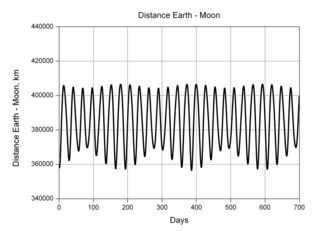
Because of its elliptical orbit with a changing eccentricity, the distance between the centers of the Moon and the Earth changes in a monthly cycle. Additionally, the gravitational pull of various celestial bodies, most notably the Sun and to a lesser extent Jupiter, disrupts the distance. Other planets in the solar system contribute minor disruptions, such as asteroids, tidal forces, and relativistic effects. The pressure exerted by solar radiation also causes the lunar distance to fluctuate by ± 3.6 mm.
The average distance to the Moon can vary by more than 21,000 km within a month, a fact that has been extensively studied. However, scientists have been able to accurately model the distance to the Moon over thousands of years.
An increase in the average distance
Currently, the rate of decline is 3.805 ± 0.004 cm per year. Recent observations suggest that this rate has been increasing. In fact, if the Moon were to be moving away at a rate of 3.8 cm/year, it would mean that the Moon is only 1.5 billion years old, whereas scientists estimate its age to be around 4 billion years. Furthermore, it seems that this unusually high rate of increase in distance continues to rise.
Scientists predict that over time, the Earth and Moon will become gravitationally locked and start rotating in sync, causing the distance between them to keep growing. This occurs when the Moon’s orbital period matches the Earth’s rotation period. At this point, the two celestial bodies reach a state of equilibrium, with no additional rotational energy involved. According to models, it is estimated that it will require approximately 50 billion years for this configuration to be achieved.
The average distance to the Moon is increasing, indicating that it was closer in the past. Geological evidence suggests that approximately 2500 million years ago, during the Precambrian era, the average distance to the Moon was about 52 times the radius of the Earth (52 R⊕), compared to the current distance of about 60 times the Earth’s radius (60 R).
According to the widely accepted giant impact hypothesis, the Moon was formed as a result of a catastrophic collision between Earth and another planet. This collision created a cluster of fragments that initially existed at a distance of 3.8 times the Earth’s radius (3.8 R⊕). The initial impact is estimated to have taken place approximately 4.5 billion years ago.
Tidal forces causing dissipation
The Moon’s gravitational pull on Earth also has the effect of slowing down Earth’s rotation, a phenomenon known as tidal braking. In simpler terms, this means that the Earth’s rotation transfers some of its angular momentum to the Moon’s orbit. As a result of this slowing rotation, the length of a day (24 hours) increases by 2.3 milliseconds every century. The energy lost by the Earth is transferred to the Moon, causing it to move further away from Earth at a rate of 3.8 centimeters per year. This transfer occurs because the Earth’s rotation causes the water displaced by tides to be carried away, shifting the Earth’s center of mass and resulting in a tangential acceleration on the Moon. This gradual increase in the Moon’s speed in its orbit causes Earth’s rotational velocity to decrease imperceptibly, while the Moon’s orbit expands steadily.
The ancient Greeks were the first astronomers to measure the distance between the Earth and the Moon. One of the Greek astronomers, Aristarchus of Samos, calculated this distance by observing the Earth’s shadow passing over the surface of the Moon.
Up until the late 1950s, measurements of the Earth-Moon distance were primarily based on optical angular measurements. However, the Space Age brought about significant advancements in accuracy and precision. During the 1950s and 1960s, scientists conducted various experiments using radar, lasers, spacecraft, and computer models to improve their measurements.
These methods, discussed in the following paragraphs, provide a historical and interesting perspective on the determination of the Earth-Moon distance, but are by no means exhaustive.
Lunar parallax
The oldest technique for determining the distance between the Earth and the Moon involves measuring the angle between the Moon and a fixed reference point from multiple locations. This synchronization can be achieved by taking measurements at a predetermined time or during a shared event. In the past, before the invention of precise mechanical stopwatches, observers would often use a lunar eclipse or the moment when the Moon crossed a meridian (if the observers were at the same longitude) as the event for synchronization. This measurement technique is known as lunar parallax.
To enhance the accuracy of the measurements, certain systematic errors must be taken into account. These include correcting the measured angle to compensate for refraction and distortion of light in the Earth’s atmosphere.
Lunar eclipse:
A lunar eclipse occurs when the Earth comes between the Sun and the Moon, casting a shadow on the Moon’s surface. This phenomenon is a result of the alignment of the Sun, Earth, and Moon in a straight line, with the Earth blocking the sunlight from reaching the Moon. During a lunar eclipse, the Moon appears to darken and may take on a reddish or orange hue. This is because some of the sunlight passing through the Earth’s atmosphere is scattered and refracted, causing the Moon to reflect this light. Lunar eclipses are fascinating astronomical events that are often observed by people around the world.
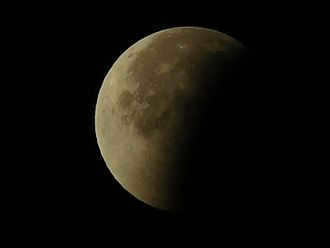
In the early stages of measuring the distance between the Earth and the Moon, astronomers relied on lunar eclipse observations. They used their knowledge of the Earth’s radius and the fact that the Sun is farther away from the Earth than the Moon. By studying the geometry of a lunar eclipse, scientists were able to apply trigonometry to calculate the distance to the Moon.
The first recorded attempt to measure the Moon’s distance using trigonometry was conducted by Aristarchus of Samos, a Greek astronomer and mathematician in the 4th century BC. Hipparchus also made calculations in this field, resulting in a distance estimate of 59-67 Earth radii. Ptolemy later utilized this method and computed a distance of 64 1/6 Earth radii at the farthest point.
An expedition led by the French astronomer A. C. D. Crommelin observed the southern transit of the Moon from two different locations on the same night (the moment when the Moon crosses an imaginary circle just above and through the poles). Additional precise measurements were taken from 1905 to 1910 to determine the angle of elevation when a specific lunar crater (Mösting A) crossed the meridian at both the Greenwich stations and the Cape of Good Hope, which are situated at approximately the same longitude. The resulting distance was then calculated with an error margin of ± 30 km and served as the reference value for the Moon’s distance for the following fifty years.
Obscurations
By observing the moment when the Moon obscures a background star from multiple locations with a known separation distance, or by measuring the angle between the Moon and the background star at a specific time, the lunar distance can be determined.
In 1952, astronomers O’Keefe and Anderson calculated the distance to the Moon by observing four obscurations from nine different locations. They obtained an average distance of 381,504.6 ± 4.7 km. This calculation was further refined in 1962 by Irene Fischer, who incorporated more precise geodetic data (geometric data about the Earth) and arrived at a value of 381,500.2 ± 2 km.
Radar measurements
An experiment conducted in 1957 by the Naval Research Laboratory in the United States utilized radar signal echoes to determine the distance between the Earth and the Moon. To achieve this, radar pulses lasting 2 ms were transmitted from a large radio antenna with a diameter exceeding 15 meters. The echo produced by the radio waves bouncing off the Moon’s surface was recorded, and the time it took for the waves to travel was measured. This measurement allowed for the calculation of the distance between the two celestial bodies. However, obtaining a clear signal free from interference proved to be a challenge, making accurate measurements difficult to obtain consistently.
The Royal Radar Establishment in England replicated the experiment in 1958. They transmitted radar pulses that lasted for 5 ms and had a peak power of 2 megawatts, at a rate of 260 pulses per second. Similar to the previous experiment, they recorded the echo of radio waves on the surface of the Moon and measured the time it took for the wave to travel. They made several measurements and combined them to obtain a more reliable signal, including overlaying oscilloscope traces on photographic film. Using these measurements, they were able to calculate the distance with an error margin of only 1.25 km.
These initial experiments served as proof of concept and were conducted over the course of a day. The tracking lasted for a month and resulted in an average measurement of lunar distance of 384,402 ± 1.2 km, which was the most accurate measurement at that time.
Laser measurement
In 1962, a team from the Massachusetts Institute of Technology and a Soviet team from the Crimean Astrophysical Observatory conducted a groundbreaking measurement. They measured the time it took for a laser beam to travel back and forth by reflecting directly off the lunar surface.
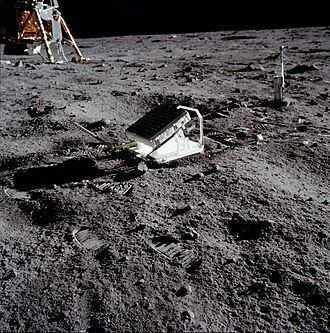
In an effort to enhance the precision of measurement, reflectors were installed on the Moon’s surface by astronauts during the Apollo missions in 1969. These reflectors continue to be utilized in current measurements, which rely on a network of laser facilities worldwide. The use of lunar laser rangefinder experiments has proven to be the most dependable approach for determining the distance to the Moon, with sub-millimeter resolution being achieved in real-time.
Amateur stargazers
Thanks to the accessibility of precise timing devices, high-resolution digital cameras, GPS receivers, powerful computers, and instant communication devices, amateur stargazers are now able to carry out advanced measurements.
For instance, on May 23, 2007, digital photos of the Moon were taken during the near eclipse of Regulus from two different locations in Greece and England. By determining the parallax between the Moon and the star in the background, it became possible to calculate the distance to the Moon.
A more ambitious endeavor, known as the Aristarchus Campaign, named after the ancient Greek astronomer, was conducted during the lunar eclipse on April 15, 2014.
Related Links
Suggestions
- ↑"Solar System Exploration – Earth’s Moon: Facts and Figures", NASA, May 10, 2011. (as of November 6, 2011)
- ↑http://curious.astro.cornell.edu/question.php?number=124 Is the Moon getting farther from Earth?
- ↑Murray C.D. and Dermott S.F., Dynamics of the Solar System, Cambridge University Press, 1999., pp. 184
- ↑Terence Dickinson, From the Big Bang to Planet X: 50 of the most frequently asked questions about the Universe – and their answers, Camden East, Ontario, Camden House, 1993., 151 p. (ISBN0-921820-71-2), pp. 79-81
- ↑ BG Bills and RD Ray, “Lunar orbital evolution: a synthesis of recent results”, Geophysical Research Letters, vol. 26, p o 19, 1999., pp. 3045-3048 (DOI10.1029/1999GL008348, read online)
- ↑http://eclipse.gsfc.nasa.gov/SEhelp/ApolloLaser.html
- ↑http://isotope.colorado.edu/~geol5700/Bills_1999.pdf – Lunar Orbital Evolution
- ↑NEO Earth Close Approaches
- ↑ T.W. Murphy, Jr, “Laser location of the Moon: the millimeter problem”, Reports on Progress in Physics, vol. 76, July 1 – 1, 2013, pp. 076901. (ISSN0034-4885 and 1361-6633, DOI10.1088/0034-4885/76/7/076901, read online, as of September 14, 2016.)
- ↑ R. D. Riesenberg, J. F. Chandler, N. R. Colmenares, and N. H. Johnson, “Modeling and analysis of APOLLO lunar laser range data,” arXiv: 1608.04758 [astrophysics, physics: gr-qc], Aug. 16, 2016. (read online, consulted September 14, 2016)
- ↑ A. Vitagliano, “Numerical integration for real-time generation of single ephemerides over a large time interval,” Celestial Mechanics and Dynamical Astronomy, 1997. (read online)
- ↑ WM Folkner et al, “Planetary and lunar ephemerides DE430 and DE431,” IPN Progress Report, 2014. (read online)
- ↑ James C. G. Walker and Kevin J. Zahnle, “Lunar nodal tide and distance to the Moon in the Precambrian period”, Nature, vol. 320, April 17, 1986, pp. 600-602 (DOI10.1038/320600a0, read online, as of September 14, 2016.)
- ↑ Bruce G. Bills and Richard D. Ray, “Lunar orbital evolution: a synthesis of recent results”, Geophysical Research Letters, vol. 26, October 1-1, 1999, pp. 3045-3048 (ISSN1944-8007, DOI10.1029/1999GL008348, read online, as of September 14, 2016.)
- ↑ “When will the Earth connect to the Moon? – Universe Today”, April 12, 2016 (as of September 14, 2016)
- ↑ “New evidence suggests that the Earth and Moon were once a single entity”, The Daily Galaxy –Great Discoveries Channel (accessed September 14, 2016)
- ↑ “Interesting facts about the Earth’s Moon”, (accessed September 14, 2016)
- ↑ “Measuring Distances in Astronomy”, astronomia.fr (accessed September 14, 2016)
- ↑ “Aristarchus of Samosus and Fortia d’Urbana: A treatise on the size and distances of the Sun and the Moon”, Firmin Didot father and son, January 1, 1823. (read online)
- ↑ XX Newhall, E. M. Standish, and J. G. Williams, “DE 102 – Numerically Integrated Ephemerides of the Moon and Planets over Forty-Four Centuries”, Astronomy and Astrophysics, volume 125, August 1, 1983, pages 150-167 (ISSN0004-6361, read online, as of September 14, 2016)
- ↑ Martin C. Gutzwiller, “Moon-Earth-Sun: the oldest three-body problem”, Reviews of Modern Physics, volume 70, April 1, 1998, pages 589-639 (DOI10.1103/RevModPhys.70.589, read online, as of September 14, 2016.)
- ↑ (in) William Sheehan and John Edward Westfall, The Passage of Venus, Prometheus Books, January 1 – 1, 2004, 407 pages (ISBN978-1-59102-175-9, read online)
- ↑ (in) Stephen Webb, Measuring the Universe: A Cosmological Ladder of Distances, published by Springer Science & Business Media on March 18, 1999, consists of 342 pages. (ISBN978-1-85233-106-1, available to read online)
- ↑ (in) Albert Van Helden, Measuring the Universe: Cosmic Dimensions from Aristarchus to Halley, published by the University of Chicago Press on December 15, 2010, consists of 212 pages. (ISBN978-0-226-84890-7, available to read online)
- ↑ For a good explanation of the method, visit this website.
- ↑ References a and b (in Russian) Irene Fischer, “Distance to the Moon,” published in Bulletin Géodésique (1946-1975), vol. 71 on March 1, 1964, pp. 37-63. (DOI10.1007/BF02526081, available to read online as of September 14, 2016.)
- ↑ John A. O’Keefe and J. Pamelia Anderson, “The equatorial radius of the Earth and the distance to the Moon”, The Astronomical Journal, vol. 57, August 1-1, 1952, pp. 108 (ISSN0004-6256, DOI10.1086/106720, read online, consulted September 14, 2016.)
- ↑ (in) B.S. Yapli, “A study of lunar radar at a wavelength of 10 cm”., International Astronomical Union, 1958 (read online)
- ↑ (in) J. C. Hey, “Radar Observations of the Moon at 10 centimeters wavelength.”, International Astronomical Union, 1958 (read online)
- ↑ BS Yaplee, SH Knowles, A. Shapiro, and KJ Craig, “Average distance to the Moon determined by radar,” Symposium – International Astronomical Union, vol. 21, January 1, 1965, pp. 81-93. (ISSN0074-1809, DOI10.1017/S0074180900104826, read online, as of September 14, 2016.)
- ↑ (in) P. L. Bender, D. G. Curry, S. C. Poultney, and Colorado Ally, “Lunar Laser Detection Experiment,” Science, vol. 182, d. October 19, 1973., pp. 229-238 (ISSN0036-8075 and 1095-9203, PMID17749298, DOI10.1126/science.182.4109.229, read online, as of September 14, 2016.)
- ↑ “Lunar Parallax” at www.etwright.org (as of September 14, 2016)

